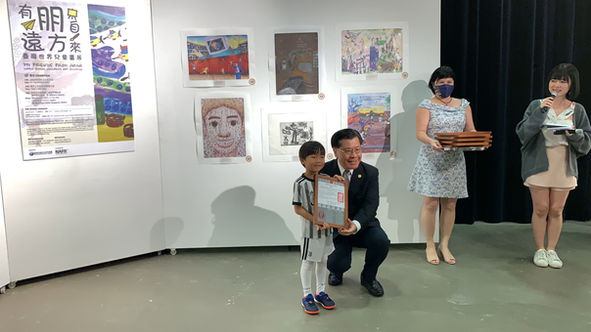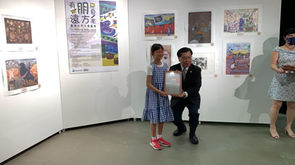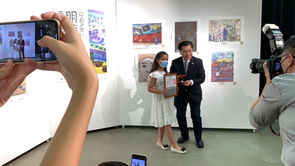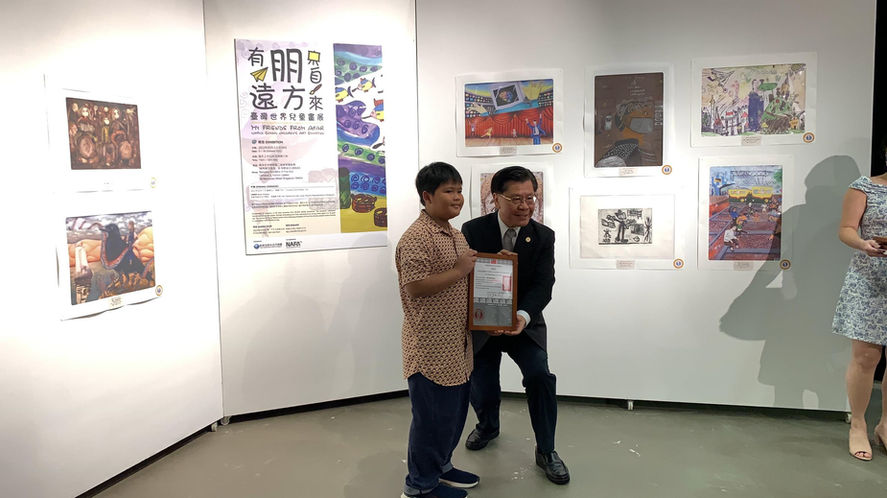

Arts Education to Public Speaking Programmes

From Arts to Public Speaking
Claiming International Awards
Nurturing Creativity & Originality
Successful Direct School Admissions (DSA)

Safe & Fun Environment

Parents Choice to Develop Children

My girl has been learning art during the school holidays during her early years and was captivated by how fun and friendly Teacher Charlotte and Teacher Vernon was. Now at her teens, she is asking to go back for their holiday programme again :))

With patient guidances from Artistori's friendly teachers, my girl has not only deepened her interests in arts but has also acquired how to express her ideas through artworks and by presentations. The Artistori teachers promote initiatives and creativity. With this, more importantly, i believe that my girl's characters can be shapened and enriched by arts.

My kids love the classes at Artistori! The teachers at Artistori are warm, encouraging and patient! I always look forward to seeing my kids' masterpieces at the end of each project as every project is different! Keep up the great work!

My girl has been learning art during the school holidays during her early years and was captivated by how fun and friendly Teacher Charlotte and Teacher Vernon was. Now at her teens, she is asking to go back for their holiday programme again :))
The Right Place to Grow & Learn

Art Education Benefits
Cognitive Abilities
Planning, thinking, direction and clarity, etc
Confidence
Persistence, self-awareness and aesthetics, etc
Articulation
Influence, selling point and the expression of ideas, etc
Leadership
Decision making, public speaker and presenter, etc
Social Awareness
Affability, Empathy and Affect, etc
Multiple Intelligences
All aspects of multiple intelligences
Habits of Mind
Creativity, change, originality, mistakes and new discoveries, etc
Mindfulness
Touching our senses, experiences, emotions, etc
"If you think art is just aesthetics, start rethinking!"
The moments from birth to preschool, to primary school and beyond, every new speech, new action and new discovery is a miracle for every parent. These moments are artistic and worth every penny pictured. Art, in this sense, is referenced as such miracles.
Art is an expression of truth, love, emotions, ideologies, imaginations and adventures.
Art is a medium to reveal and communicate stories, meanings and values from a perspective of an important person, and Art tells audiences what this important person sees and thinks.
Art attracts attention with creativity and originality.
Art creates opportunities to socialize and brings appeal to associate with this important person.
Art influences others to want to learn more about the art making process, the decisions made and the styles adapted.
Because every important person is growing and learning, Art is a journey, it never stops. Art is and should be with everyone.
If your lens towards Art is also in this belief as well, Artistori cordially invites you to join Artistori in the fun of art making, express art through your voice and speech and ignite the value and meaning of art!

In Artistori’s process of art-making, our curriculum is designed based on the constructivist theory where new abilities and knowledge are built prior to the current abilities and knowledge of an individual. Our Art Education scaffolding process iterates, forming a Zone of Proximal Development where individuals can perform tasks without guidance.
Research has shown that learning in such a process, spaced and in intervals, enables learners to remember and learn effectively. This favorite quote "Practice makes perfect", in this context, is not a drill. Our art education curriculum rotates fundamental art skills and knowledge while curriculum topics exposed are newer contents, stories, discoveries and real-world issues.
"Practice", in this context, is heightened by our curriculum's scaffolding to develop interest, curiosity and challenges to our art students. This ignites Metacognition, when students start thinking about their self-experiences, existing knowledge and abilities to address the art topic to face new challenges and form desired outcomes.
Metacognition promotes affective learning as students are self-aware of what they are capable to achieve and with guidance, they form newer beliefs and positive attitudes for newer capabilities. In a class setting, students self-reflect, discuss, seeks new questions, share and contribute new ideas, new possibilities, encouraging critical cognition and creativity.
The individual makes art intuitively, confidently and seeks newer abilities and knowledge enthusiastically. As we discuss what is aesthetically pleasing or worth achieving, each of these discussions are new opportunities and constructive feedback for students to recognize and rethink new ways to deal with change.
In each curriculum topic's final, our students present, show, tell and publicly speak about their art piece, art journey and their belief in front of their classmates and teachers, displaying their leadership with their art!
What happens in every curriculum cycle within Artistori is a process that aligns and develops the soft skills required for the 21st century learner.

In fact, Art Education develops important soft skills for the future...

Since 2015, the World Economic Forum reports of 16 skills required for the 21st century learners and eventually till date, Future of Jobs Report indicates the necessity for skills aligned with Art Education, i.e.: Creativity, Critical Thinking, Problem Solving, Communication, Curiosity, Persistence (GRIT), Initiation, Culture, Technology and Social awareness.
























































